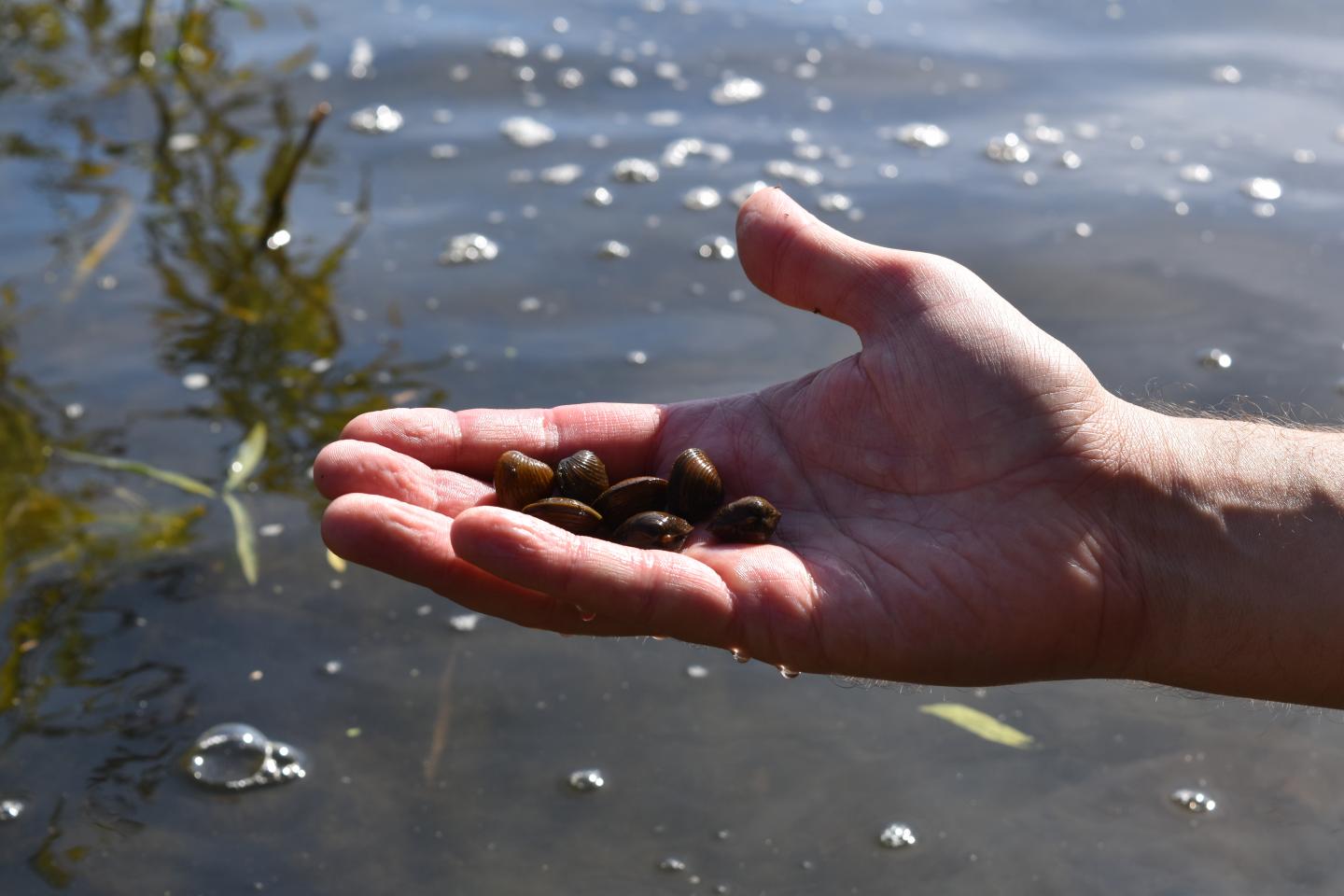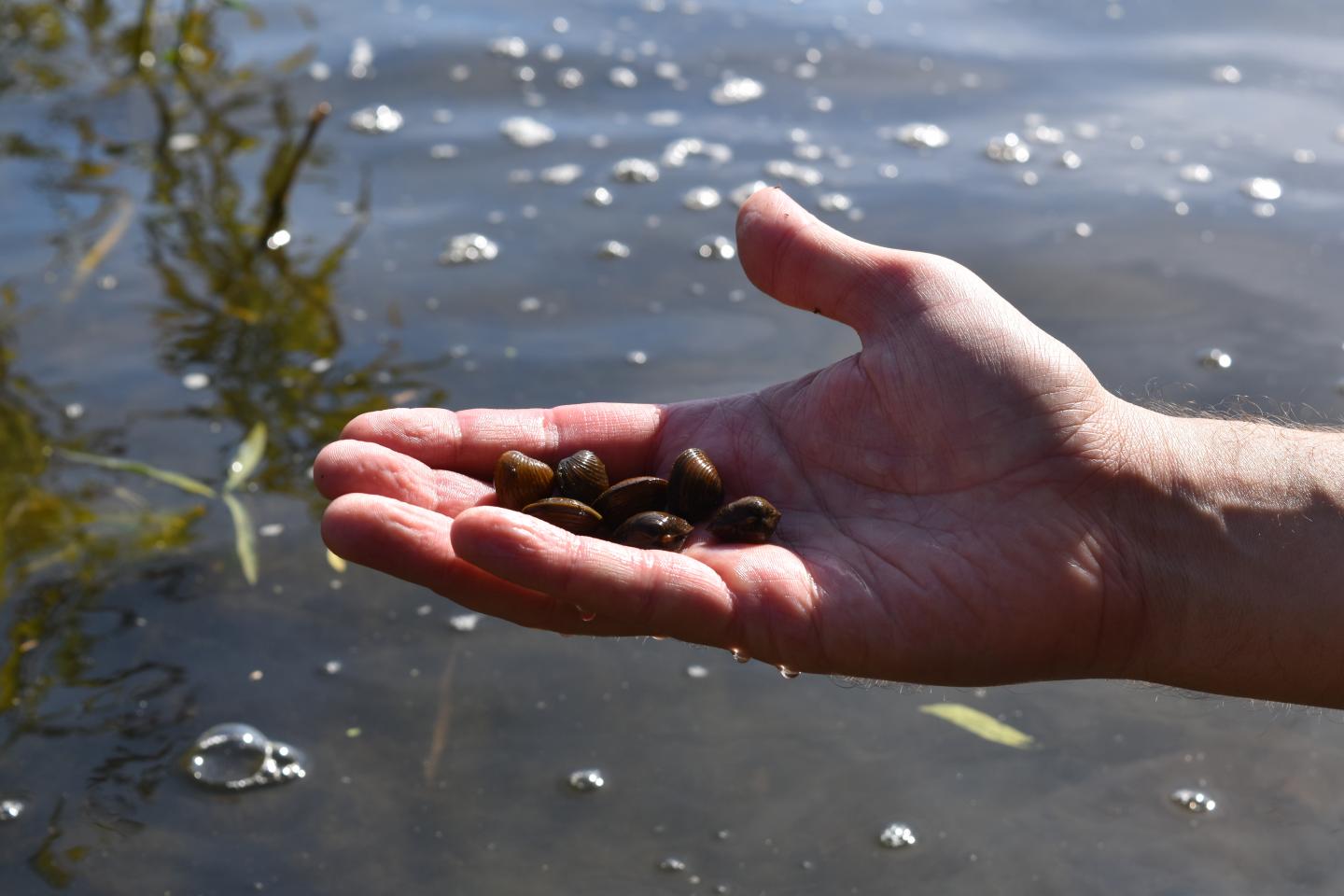
Credit: University of Illinois
URBANA, Ill. – When seeking a cure for a disease, early detection is often the key. The same is true for eliminating invasive species. Identifying their presence in a lake before they are abundant is vital. A recent University of Illinois study successfully used environmental DNA to detect invasive clams in California and Nevada lakes. Researchers believe this tool can help identify pests before they become a problem.
"Environmental DNA, or eDNA, means we're finding the DNA of an animal or plant that we're looking for from an environmental sample, like water," says U of I aquatic ecologist Eric Larson. "It's an emerging tool that has the potential to be better at detecting rare species in some cases, relative to some of our more traditional survey methods. There's a lot of DNA floating around in a lake or a stream, and if we can capture and identify it, it can tell us what organisms are present, including invasive species."
Larson and colleagues from Rice University, the University of Notre Dame, and the University of Nevada at Reno developed a type of laboratory analysis called an eDNA assay to test for the presence of Corbicula, an invasive freshwater clam. Larson says, "We found eDNA for Corbicula in four of 11 lakes where we already knew it existed, including Lake Tahoe, and did not find eDNA of the clam in seven other lakes where it had never been found. The location of Corbicula eDNA within Lake Tahoe also closely matched where we know the clams are. So these results confirmed that the assay works well, and that it could be helpful in monitoring for new populations of this invader as it continues to spread."
Larson says Corbicula is very common in Europe and the United States but they're not everywhere yet. The clams, which are originally from East Asia, aren't very large, but can have major effects on freshwater ecosystems like lakes and rivers. Unchecked, they become invasive, and can even clog pipes and damage infrastructure, similar to the impacts observed for other invasive species like zebra and quagga mussels in the Great Lakes region.
"Corbicula firmly established in Lake Tahoe by 2007," says University of Nevada aquatic ecologist and study co-author Sudeep Chandra. "They influence the water quality and reduce the remarkable clarity in the nearshore habitat of Lake Tahoe. By recycling and excreting nutrients, the invasive clams contribute to the growth of nearshore algae. So detecting them around the lake is critical to understanding where the clams will degrade water quality."
The invasive clams even occur in Larson's backyard in Champaign, Illinois. "They're very distinctive and are hyper-abundant in central Illinois," Larson says. "If you see a lot of little white shells on the stream bed, those are probably Corbicula." Larson is continuing his lab's eDNA research on Corbicula in these streams of central Illinois. "Because we now know that the eDNA assay works well, we want to apply it to some other questions," says Larson. "Is there a best time of the year to use eDNA to detect this invader? If we can't find their DNA in the winter, does it spike in the summer? Do floods mobilize a lot of DNA, making it easy to detect or does flooding dilute the DNA that's there?" Larson hopes that answers to these additional questions will help managers and researchers find and react to new Corbicula invasions elsewhere before they become problematic.
The study, "Development and field validation of an environmental DNA (eDNA) assay for invasive clams of the genus Corbicula" is online at the journal Management of Biological Invasions. The article is lead-authored by Dominique A. Cowart, a U of I postdoctoral researcher, and coauthored by Mark A. Renshaw, Crysta A. Gatnz, and David M. Lodge of the University of Notre Dame, Scott P. Egan of Rice University, and John Umek and Sudeep Chandra of the University of Nevada Reno.
###
This research was supported by the US Environmental Protection Agency, US Department of Agriculture National Institute of Food and Agriculture Hatch Project, funds from the Southern Nevada Public Lands Management Act, Truckee River Fund, Nevada Division of State Lands, Tahoe Regional Planning Agency, as well as California's State Parks and the Lahontan Water Quality Control Board to Southern California and others to support surveys of clams in the Tahoe region, and a UIUC STEM postdoctoral fellowship to Cowart.
Eric Larson is an assistant professor in the Department of Natural Resources and Environmental Sciences in the College of Agricultural, Consumer and Environmental Sciences at the University of Illinois.
Media Contact
Debra Levey Larson
[email protected]
217-244-2880
@ACESIllinois
http://aces.illinois.edu/





